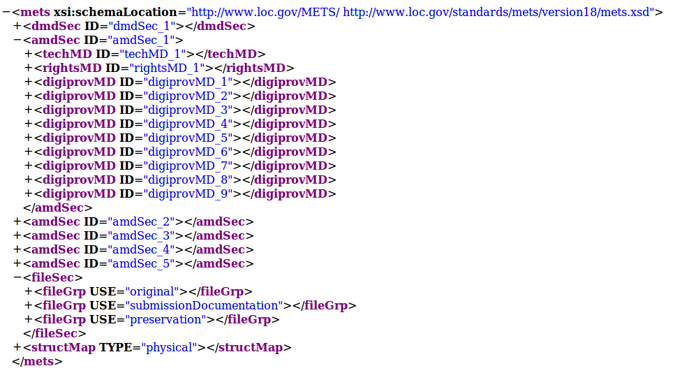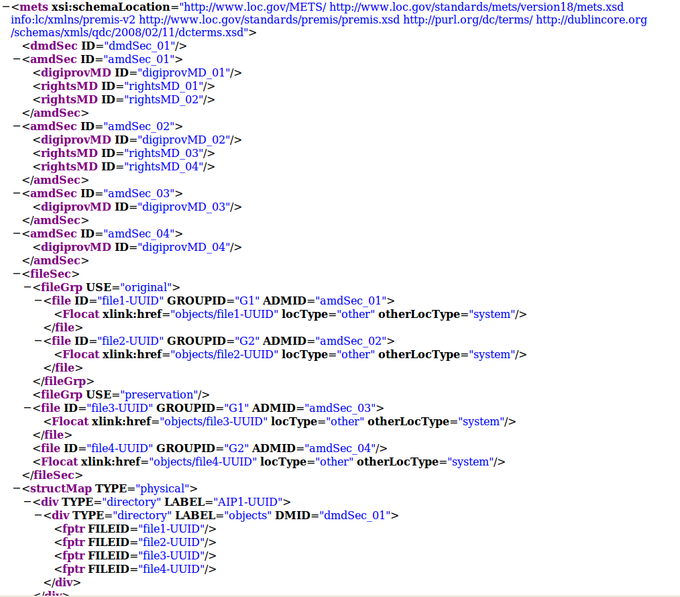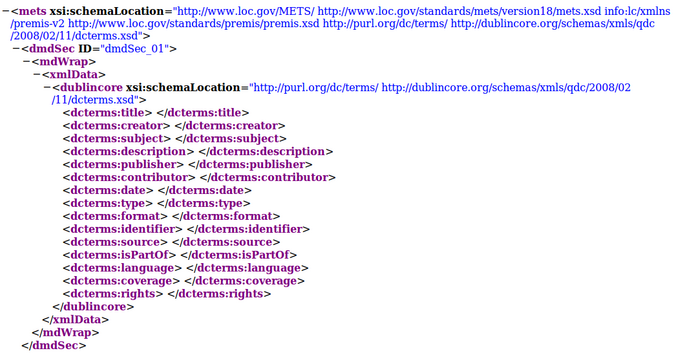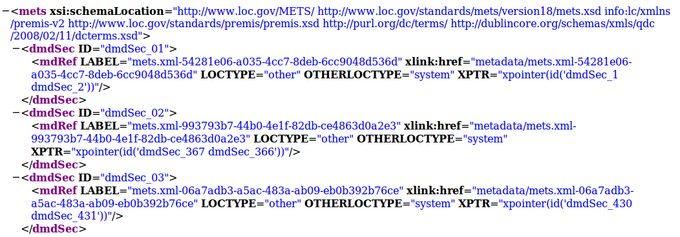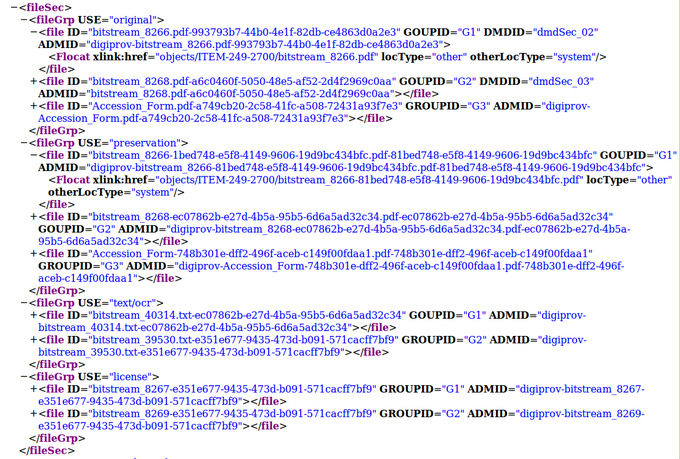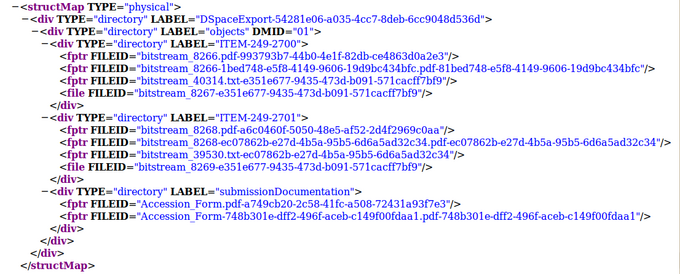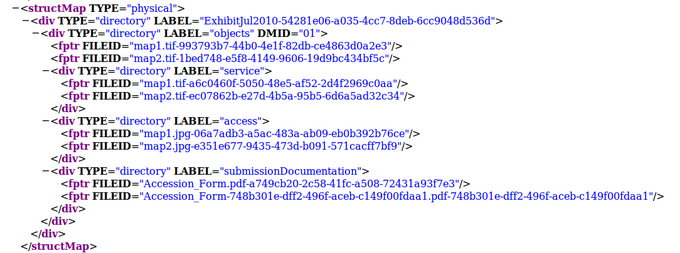METS
Main Page > Development > Development documentation > Metadata elements > METS
Basic outline
- The METS file will have a basic generic structure which will be present for all AIPs derived from different kinds of transfers.
<dmdSec>
- There may be one dmdSec for the AIP as a whole. Each original file may also have a dmdSec.
- The dmdSecs are numbered dmdSec_01, dmdSec_02 etc.
- The dmdSec contains Dublin Core metadata. If the user does not enter any DC metadata during transfer/ingest and no DC metadata was included in the transfer (eg as part of a DSpace export), there will be no dmdSec.
- The dmdSec may contain a reference to metadata in another file, such as a mets.xml file included in a DSpace export.
<amdSec>
- There is one amdSec for each object.
- The amdSec is identified by the filename and UUID.
- Each amdSec will include one digiprovMD.
- An amdSec for an original object may also contain one or more rightsMDs. The rightsMD may contain a reference to metadata in another file, such as a mets.xml file included in a DSpace export.
<fileSec>
- There is one fileSec listing all files.
- The fileSec is organized into the following fileGrps, only the first of which is required for all METS files:
- original
- preservation
- service
- access
- license
- text/ocr
<structMap>
- There is one structMap showing the physical layout of the files in the objects directory.
Detailed outline
dmdSec
mdWrap
The dmdSec consists of simple Dublin Core, except for <isPartOf>, which is a qualification of <Relation>.
mdRef
The descriptive metadata for DSpace collections are contained in the METS files that come with the DSpace export, so the Archivematica METS file will point to them using mdRef. In this example, dmdSec_01 points to the collection-level mets file; dmdSec_02 and dmdSec_03 point to the mets files for the objects:
<fileSec>
The fileSec is broken into four fileGrps as follows:
- <fileGrp USE="original">
- <fileGrp USE="preservation">
- <fileGrp USE="text/ocr">
- <fileGrp USE="license">
<structMap>
Digitization output
A SIP containing the output of a digitization project may contain service and access copies of objects in additional to master copies. Normalization will not typically be required on any of the objects. An example of this kind of output would be unedited tiff files with colour targets (master), edited tiff files with colour targets removed (service) and high-resolution jpegs (access copies). In some cases, the access copies will be removed to the DIP, but in others they will be copied to the DIP but copies will also be retained in the objects directory.
The SIP should be structured so that the objects are clearly identified as master, service or access copies, i.e. through the directory structure:
- /objects
- file1.tif
- file2.tif
- /service
- file1.tif
- file2.tif
- /access
- file1.jpg
- file2.jpg
<fileSec>
We will keep <fileGrp USE="original"> for master copies to stay consistent with the generic METS file structure. So a typical fileSec for an AIP containing digitization output would consist of the following:
- <fileGrp USE="original">
- <fileGrp USE="service">
- <fileGrp USE="access">
There also be <fileGrp USE="preservation"> for normalized copies of the submission documentation or if any of the ingested objects are normalized.
